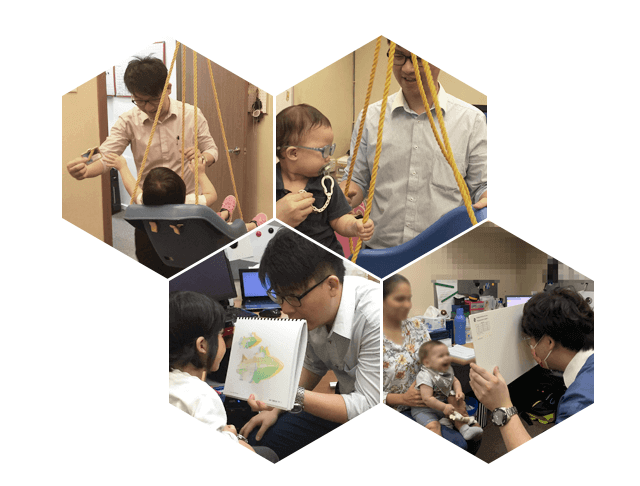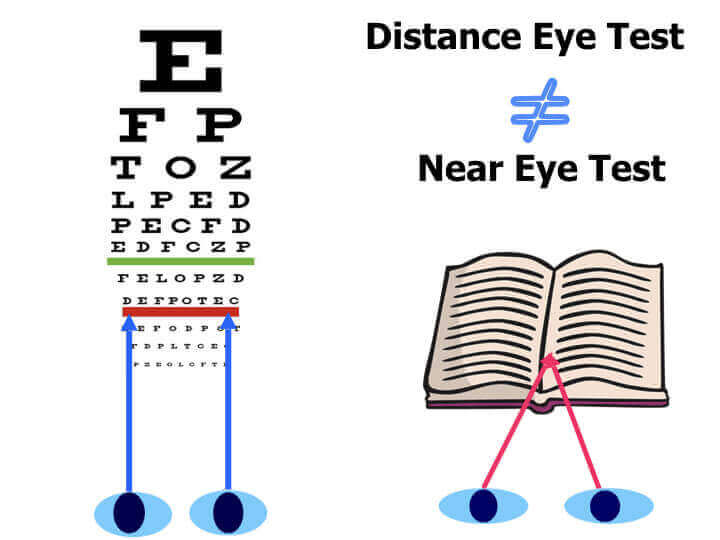Services

Good vision isn’t inherent at birth; it evolves from early infancy, through childhood, and keeps changing over the span of our lives. The development of clear vision is crucial for your child’s comprehensive growth and progress. Unaddressed and untreated vision issues can lead to challenges in learning, affect self-confidence, and even influence future career options. At Neuro Vision Specialist Centre, we’re dedicated to the mission of providing children in Kuala Lumpur and its neighboring regions with the foundation for a lifetime of clear vision.
Vision problems in children can often be overlooked, leading to challenges in learning and development. It’s crucial to understand the impact of these issues and the necessity of comprehensive vision assessments. Here are some key vision facts:
- 60% of children with learning difficulties have vision problems not identified by typical vision screenings.
- 1 in 4 children with vision issues significantly struggle with reading and learning.
- Eye positioning varies between viewing distant objects and those that are near.
- Clear distance vision is only one of 17 vital visual skills; near vision assessment requires more detailed evaluation

Are eye examinations all the same?
Many of the children we encounter at our office have undergone vision screenings and other eye exams, yet they face difficulties due to undiagnosed vision issues.
It’s crucial for parents to realize that the testing equipment utilized during school screenings and standard eye exams primarily assesses how well a person can discern the letters on an eye chart. Most of these screenings focus on evaluating distance vision, color vision, and any apparent indicators of vision problems like color blindness.
However, it’s important to recognize that the ability to read the letters on an eye chart is just one of 17 essential visual skills necessary for reading and learning. Most eye doctors do not assess all 17 visual skills comprehensively. Therefore, even if you’ve been informed that your child’s vision is satisfactory, there may still be underlying problems that need attention.
What is the relation between Vision and Learning?
Numerous essential visual skills required for effective learning often go unexamined in a typical eye checkup. Some of these crucial skills encompass:
1. Eye Movement (Tracking)
When you contemplate how your eyes operate during reading, you’ll notice they frequently move back and forth along the lines of text. Incorrect eye movement can lead to a student losing their place while reading, struggling with copying from the board, and skipping or omitting small words during reading. These types of vision issues can significantly hinder the process of reading and learning.
2. Focusing
The ability to change focus between objects at varying distances, akin to a camera lens, is essential. Throughout the day, a child must switch focus to see the classroom board and then read or write at their desk. Indications of a focusing problem may encompass blurred vision while reading, difficulty seeing clearly at a distance after reading, and experiencing fatigue or headaches while engaged in reading.
3. Eye Teaming (Convergence)
When the two eyes fail to collaborate effectively, it can result in double vision, frequent loss of place during reading, headaches, eyestrain, and an inability to sustain focus on a visual task for an extended period. These issues can lead to difficulties in maintaining attention and focus while working on school assignments.
4. Eye-Hand Coordination
Tasks such as writing, drawing, and activities involving throwing or catching objects necessitate well-developed eye-hand coordination skills. Undiagnosed vision problems can impede a child’s proficiency in eye-hand coordination, affecting their performance in these tasks.
What are the signs or indications on infants and toddlers?
Common signs or indications on infants and toddlers:
– One eye appears to turn inward or outward (indicative of lazy eye or strabismus).
– Frequent squinting or closing of one eye.
– Lack of response to visual stimuli.
– Challenges in tracking and following moving objects.
Children Do Not Know To Complain
Children lack the awareness to express their discomfort, often assuming that everyone perceives the world as they do. Therefore, it is vital for parents to be vigilant for the following symptoms, which may signify common vision issues.
What are the symptoms of vision problems in school-age children?
Below are common symptoms in school-age children:
– Experiences line-skipping or line-repetition while reading.
– Frequently omits small words during reading.
– Demonstrates weak reading comprehension.
– Homework assignments take longer to complete than expected.
– Complains of headaches at the end of the day.
– Struggles to maintain focus during reading.
– Faces challenges in meeting assignment deadlines.
– Encounters difficulty when copying from the board.
– Suffers from burning, itchy, or watery eyes.
– Tilts their head or closes one eye when reading.
– Displays an eye that turns inward or outward (indicative of lazy eye or strabismus).
– Shows an aversion to near work or reading.
– Holds reading material too close to their eyes.
– Exhibits poor handwriting.
– Appears clumsy and frequently knocks things over.
– Experiences car or motion sickness.
– Demonstrates visual perceptual difficulties.
– Has been labeled as “lazy,” a “slow learner,” or having “AD/HD” or “behavior problems.”
If your child exhibits any of these symptoms, there is a significant likelihood that they have undiagnosed vision problems. Please contact our office to schedule a functional neuro-vision evaluation as soon as possible.
What is a neuro-development vision evaluation?
Upon completion of the Neuro-Development Vision Evaluation, our Behavioral and Developmental optometrist will conduct an extensive discussion of the results and available treatment options with both parents during a follow-up office visit. Depending on the questions and discussions, this appointment may range from half an hour to an hour in duration.



